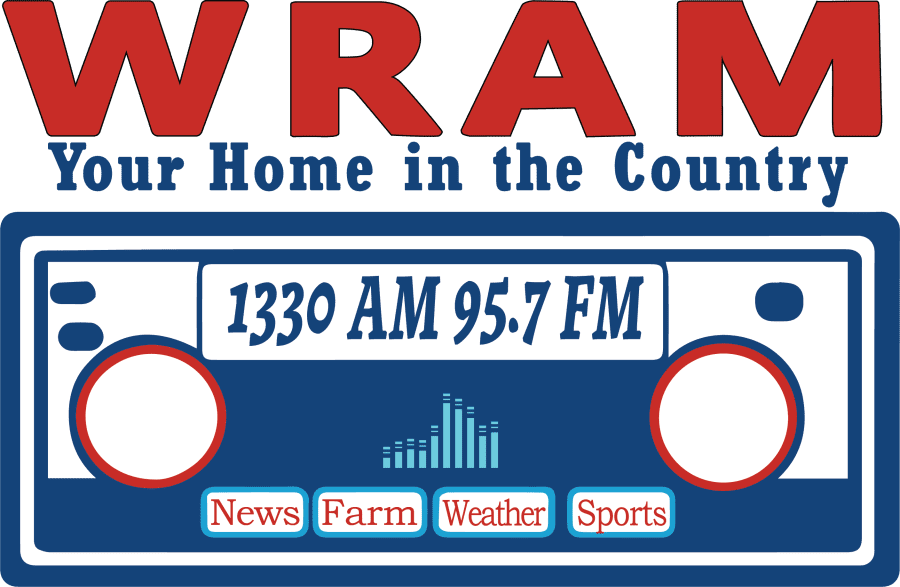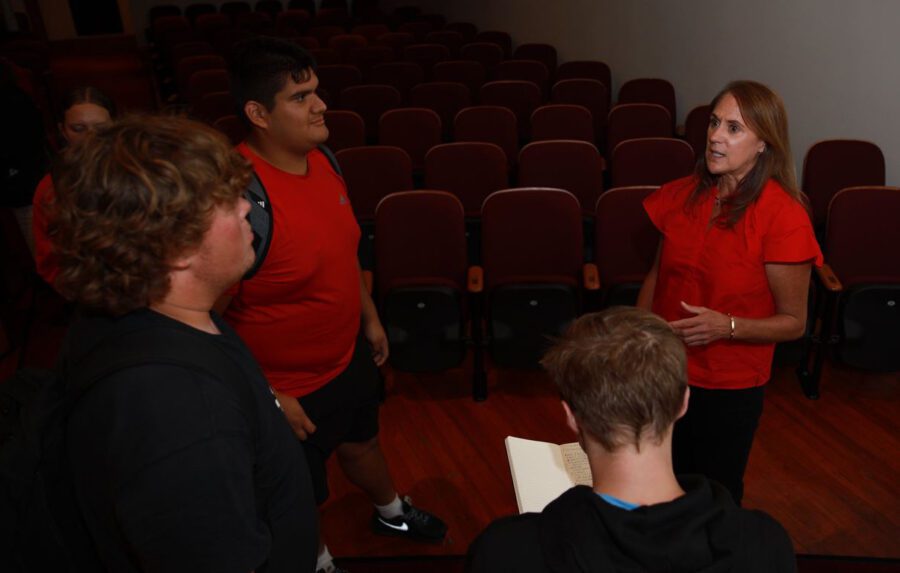In her concluding remarks after Monday evening’s Ninth Annual Wiswell-Robeson Lecture, Monmouth College President Patricia Draves neatly summarized the presentation by alumna Robin Ottenad Galloway ’90, a member of Monmouth’s Board of Trustees and chair of its finance committee.
“There’s a lot that goes into what we put in our bodies, and there’s a lot of people involved, (starting with) people who are at the farm and sitting here (in the audience),” she said. “There’s a lot that it takes to get food on our tables, and to make sure that food is safe and that it tastes good.”
Galloway, who has more than three decades of executive experience in the food industry, elaborated on some of those details in a talk she titled “Consumer Food Trends, Food Labeling and the Supply Chain.”
Founded in 2016, the purpose of the lecture series is to annually feature a speaker from the agriculture community who explores issues, challenges and innovations in the industry.
“While I’m not directly tied to agriculture, I’ve worked for a lot of food manufacturing companies where we’ve purchased a lot of commodities,” said Galloway. “The supply chain and the farms that supply us are quite important.”
Galloway also shared how Monmouth College provided her a second chance at higher education and gave a brief summary of her career, which has seen her specialize in helping to turn around stagnant businesses. She is currently working on doing just that as the chief executive officer of Dr. G’s Ingredients, a food seasoning manufacturer based in Georgia.
After detailing some specific examples related to such topics as standards of identity, regulation and packaging, Galloway said she wanted the audience to have a few takeaways. One, she said, is “packaging these days has come a long way from years ago. Words on food packaging are very important,” helping to avoid the snake oil salesman-type claims of more than a century ago. “I’m asking that the next time you go to the grocery store to take a little time and read the packaging. It’s an investment. … We can see how it drives consumer trends. Some things it moves the needle on, some things it doesn’t.”
An 18-month process
Galloway also shared the many things that need to happen during what she called at least an 18-month process of getting a product from concept to grocery store shelf.
“It starts with marketing … and a ton of data analysis is involved,” she said. “Then R&D has to make it, using marketing’s price point.” Next is consumer testing, also known as IHUT – in-home user testing.
“You can actually sign up to be part of that,” she said. “Companies test with the consumer before making a larger launch.” Then a designer works on the packaging, “then the compliance department has to bless it,” including nutritionists and regulatory experts.
And that can be the easy part.
“Now, the supply chain has to get involved,” she said. “You actually have to go procure those ingredients, you’ve got to bring them to manufacturing, you’ve got to run the product … and get it into distribution. You have to sell it to customers and ship it to warehouses and, at some point, it gets to your grocery store. … A lot of people are involved, a lot of cost. It’s a little bit of a gamble with a new product, because all of this is spent up front before you’ve ever sold anything.”
Due to her many experiences, which include CFO, COO or CEO work at companies such as Dean Foods and the Schwan Food Company, she said, “I understand why things cost what they cost. … I kind of get it.”
Galloway shared that “my heart and soul is with ice cream … most of my experience has been on the ice cream side.” So it was not surprising that the topic came up with the lecture series founder, Jeanne Gittings Robeson ’60, at dinner prior to the talk. Robeson shared that her favorite brand is Haagen-Dazs, with Galloway noting that’s an example of consumers enjoying a premium product, even though they can’t articulate the exact reason why in terms of its root ingredients.
“Haagen-Dazs is 14-16% butterfat,” said Galloway. “The standard of identity for ice cream says ‘I need to be at least 10% butterfat.’ Haagen-Dazs can charge a premium on the shelf – they’re selling above the standard. Consumers like it, and they know it’s a better product – they don’t know that it’s a higher fat content.”
Quipped Draves, “Something else we learned tonight is that Jeanne has high standards in her ice cream, and in her lecturers, as well.”
Her Monmouth story
Before she held any of her corporate positions, Galloway was in search of direction, as she opted to leave Miami University in Ohio after a rough start to her college career.
“I took a gap year before it was a ‘thing,'” said Galloway, who came to Monmouth from the Chicago suburb of Barrington. She worked as a bank teller, but then decided she really needed to get back to school. “I looked at a bunch of different schools in the Midwest, and Monmouth was the one that made me feel welcomed. A lot of the other schools, the conversation was, ‘Well, if you come here, you’ll be on probation. You don’t have enough credits to transfer in.’ Monmouth welcomed me with open arms.”
Galloway majored in accounting and was active in Kappa Kappa Gamma. She said her experience at Monmouth helped give her the confidence to embark on her career journey, which has seen her change jobs 15 times and work in 11 states and, when plotted on a map, looks like “a bit of a hot mess.”
“It was the perfect experience for me, and I’m so grateful for what I learned here,” she said. “Quite honestly, I’ve had to be a little bit brave in my career, and that’s something I learned here at Monmouth.”
***Courtesy of Barry McNamara, Monmouth College***








